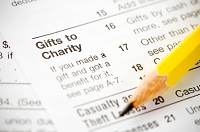As noted in our last blog post, the IRS has issued Notice 2017-73, which discusses the future issuance of proposed regulations on a variety of matters related to donor advised funds (“DAFs”). This post, our second in a series of three, discusses potential limits on the ability to use contributions from a DAF to meet public support tests for charities. Next week, we will have a third post that will discuss other key issues on which the IRS is seeking comments.
Use of DAF Distributions as Public Support
By way of background, publicly supported exempt organizations qualify as public charities, rather than less advantageous private foundations, by virtue of meeting one of two mathematical support tests under Sections 509(a)(1) and 509(a)(2) of the Code. These public support tests are designed to gauge an organization’s base of support from the general public and determine whether the organization requires heightened IRS oversight of activities provided by the private foundation sections of the Code. Under both tests, the amount of “public support” a charity receives counts toward its qualification as a public charity. The amount of support received by any one person, organization, or “substantial contributor” is therefore subject to limitations for being counted as public support under the tests. Because DAFs receive contributions from the general public, distributions from DAFs are ordinarily counted as public support without the application of these limitations. Thus, counting contributions as coming from DAFs, rather than as coming from individuals and organizations that support the DAFs, is advantageous to public charities that may be in danger of failing their public support test.
Currently, it is possible (and not unlawful) for charities to count DAF contributions as public support by essentially using a DAF as an intermediary between a donor and the public charity that ultimately receives their funds. In other words, a donor makes a contribution to a DAF maintained for that donor by a sponsoring organization and then advises the sponsoring organization to make a DAF contribution to the recipient charity—and the charity then fully counts the contribution from the DAF as public support for the purposes of its public support test. The lack of official guidance prohibiting this use of a DAF as an intermediary has afforded an opportunity for donors to make large contributions to a charity without jeopardizing its public support test, and has become a common tool used by advisors on both the donor and recipient charity side.
Proposed Closure of Loophole
In response to this practice of using DAFs to meet public support tests, the IRS announced in Notice 2017-73 that it intends to draft changes to the public support test regulations in order to “prevent the use of DAFs to circumvent the private foundation rules and excise taxes.” The Notice specifically states that for purposes of calculating a charity’s public support percentage, an organization receiving a grant from a DAF must:
- Treat a DAF sponsoring organization’s distribution from a DAF as donated by the person or persons that funded the DAF directly, rather than as donated by the sponsoring organization;
- Treat all anonymous contributions received as being made by one person (including a DAF distribution for which the sponsoring organization fails to identify the donor that funded the DAF); and
- Treat distributions from a sponsoring organization as public support without limitation only if the sponsoring organization specifies that the distribution is not from a DAF or states that no Donor/Advisor advised on the distribution.
These changes to the public support regulations will make it harder for a charity to use funds from a DAF to help meet its public support tests because they would not necessarily be able to count distributions from DAF sponsoring organizations as public support. Instead, DAF distributions could be subject to the limitations applicable to contributions received from most persons, organizations, or substantial contributors.
The IRS recognizes that this will place an additional burden on the charity recipient of DAF contributions to obtain information about the donor organization that is currently not required. However, the IRS makes the point that this extra due diligence will only be required of charities that wish to treat a DAF contribution as public support.
Click here for more information on the public support tests.


